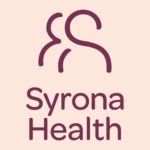
Creasphere Insights – Endometriosis
Intro
There are many widely known diseases, into which research is supported by a lot of funding and effort. Endometriosis though has often been neglected and therefore research around it is rather limited. Although, it affects an estimated 10% – 15% of women in their reproductive age [1]. On average there is a discrepancy of roughly seven years between the first appearance of symptoms and the final diagnosis of endometriosis. This number can range from three and a half years to approximately twelve for the interquartile range [2].
What exactly is Endometriosis, and what are possible causes?
Endometriosis describes the occurrence of endometrial tissue lumps, called an endometrioma, outside the uterus. Most often, endometriosis is found in the ovaries, the fallopian tubes, on the tissues that hold the uterus in place, or on the outer surface of the uterus.
Although the exact cause of endometriosis is not directly determined, researchers are studying possible theories. However, none of them has been proven with certainty by scientific research. Although it is highly contested and debated between researchers and physicians one of the possible causes are problems linked to retrograde menstrual flows. During the period, some of the tissue shed flows backwards through the fallopian tubes into different parts of the body, such as the pelvis or the peritoneal cavity. Additional causes that could be responsible for triggering endometriosis are genetic factors, hormones, surgeries, or immune system problems [3].
What are symptoms related to Endometriosis?
The most frequent symptom is pain experienced in the pelvic area of the women’s body. Yet the exact pain can differ for each woman individually. Ranging from painful menstrual cramps, chronic long term pain in the pelvis or lower back area, pain during, or after sex, intestinal pain to painful bowel movements, including pain felt during urinating during menstrual periods. Mainly during the menstrual periods, stomach and digestive problems, like diarrhoea, constipation, nausea, or bloating can frequently occur.
Furthermore, women who suffer from endometriosis might experience difficulties getting pregnant [4]. Research has well supported the association between endometriosis and infertility but is still lacking a clear, proven, and definite cause-effect relationship. While the fecundity rate for women in the traditional reproductive age without infertility ranges between 15% – 20%, the fecundity rate in women with untreated endometriosis is estimated to be anywhere from 2% – 10%. Around 30% – 50% of all women diagnosed with endometriosis also may face infertility [4]. Even though an association between endometriosis and infertility is highly assumed, a causal relationship has not yet been clinically proven. Most likely, this is due to the heterogeneity and variations in the phenotype of the disease and the multiple mechanisms by which endometriosis can impact fertility.
What are the available treatment options?
Although there is no direct cure for endometriosis, several treatment options are available. The suitable treatment for endometriosis depends on multiple factors. It generally depends both on the extent and the symptoms of the disease, and the question if the patient is currently trying to conceive. Research backs evidence that endometriosis is a progressive disease, indicating that without appropriate treatment actions, the situation might deteriorate over time [5]. In milder cases of endometriosis though, clinical studies have shown that up to a third of the symptoms ease up through time [6]. Whenever pain is the primary problem, medication is often the first step. Depending on the desire to have children, hormonal birth control is often taken into consideration, including the combined oral contraceptive pill or progestogen treatment [7].
A second common option to treat endometriosis is surgery and mostly chosen for severe symptoms if hormone treatments are not providing relief from pain. During a very complex so-called excision surgery, endometriosis patches are cut out and removed. A less complex alternative would be the so-called ablation surgery, where the lining of the uterus is destroyed by heat, freezing, or radiosurgery to reduce menstrual flow.
As both of the previously mentioned treatment options are associated with a certain risk, often basic pain anti-inflammatories like ibuprofen and paracetamol are used for treatment. Although there is no substantial evidence, it is likely that complementary and alternative therapies such as acupuncture, chiropractic care, or herbal and dietary therapies may have a positive impact on treating endometriosis.
Startups
As often traditional and well-known treatments do not help all individual patients to deal and live with endometriosis, there are more digital solutions to help. Therefore, we will showcase three companies DotLab, Syrona Health and NextGen Jane, which we identified to take a very interesting approach.
References
[1] Missmer, S. A., Hankinson, S. E., Spiegelman, D., Barbieri, R. L., Marshall, L. M., & Hunter, D. J. (2004). Incidence of Laparoscopically Confirmed Endometriosis by Demographic, Anthropometric, and Lifestyle Factors. American Journal of Epidemiology, 160(8), 784–796. https://doi.org/10.1093/aje/kwh275
[2] Arruda, M. S., Petta, C. A., Abrão, M. S., & Benetti‐Pinto, C. L. (2003). Time elapsed from onset of symptoms to diagnosis of endometriosis in a cohort study of Brazilian women. Human Reproduction, 18(4), 756–759. https://doi.org/10.1093/humrep/deg136
[3] Endometriosis. (2016, December 12). Womenshealth.Gov. https://www.womenshealth.gov/a-z-topics/endometriosis
[4] Macer, M. L., & Taylor, H. S. (2012). Endometriosis and Infertility: A review of the pathogenesis and treatment of endometriosis-associated infertility. Obstetrics and Gynecology Clinics of North America, 39(4), 535–549. https://doi.org/10.1016/j.ogc.2012.10.002
[5] Koninckx, P. R., Meuleman, C., Demeyere, S., Lesaffre, E., & Cornillie, F. J. (1991). Suggestive evidence that pelvic endometriosis is a progressive disease, whereas deeply infiltrating endometriosis is associated with pelvic pain. Fertility and Sterility, 55(4), 759–765. https://doi.org/10.1016/s0015-0282(16)54244
[6] Acién, P., & Velasco, I. (2013). Endometriosis: A Disease That Remains Enigmatic. ISRN Obstetrics and Gynecology, 2013. https://doi.org/10.1155/2013/242149
[7] The Practice Committee of the American Society for Reproductive Medicine. (2014). Treatment of pelvic pain associated with endometriosis: A committee opinion. Fertility and Sterility, 101(4), 927–935. https://doi.org/10.1016/j.fertnstert.2014.02.012
[8] Photo by Brooke Cagle on Unsplash




